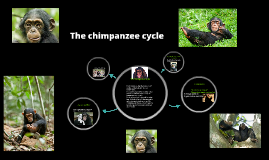


Chimpanzee lifespan male drivers#
We center our analysis on how suites of network measures can reveal evolutionarily relevant drivers of social aging ( Tables 1 and 2 and Supplementary Material).Ĭhimpanzees are a tractable comparative model for human social aging, in part, because they overcome common biases in human behavioral data (e.g. in two ways: (i) we incorporate network-wide measures of social integration, which may reveal different trends than direct social ties and (ii) we evaluate social network integration in both males and females, allowing us to determine whether social aging patterns occur consistently when the sexes occupy different baseline social profiles. Our work builds on prior work by Rosati et al. Our present study examines patterns of social aging using a mixed-longitudinal behavioral dataset from wild chimpanzees. Recent evidence shows that male chimpanzees exhibit striking similarities to humans in how their dyadic friendships change with age, suggesting shared evolutionary influences. Chimpanzees, one of our closest evolutionary relatives, are a useful comparative model of social aging as they are long-lived and socially complex but occupy more tractable social networks and relatively few lifestyle and cultural confounds. Comparative studies are essential for evaluating this perspective because they help situate human behavior and biology in its evolutionary context. Because of tradeoffs in the costs and benefits of sociality, older individuals’ sociality may be driven by shifting reproductive priorities and/or energetically constrained by physiological senescence. Key to this perspective is that social partners are a potential source of both stress and support. Under such theory, individuals are predicted to use social behavior to adjust to physiological priorities and environmental challenges that vary by life stage and individual history. Thus, holistic interpretations of social aging require a more generalizable framework, such as that offered by life history theory. macaques, capuchins, lemurs, reviewed in ref. Humans, however, are not the only animals that exhibit decreased social integration with age (e.g. Hypotheses for age-related declines in sociality in humans have focused on human-specific causes, such as shifts in cognitive-affective priorities with age that are driven by a perception of remaining lifetime, broken-down systems of extended family support in industrialized society, and/or significant life events that change social circles (e.g. A major goal in social gerontology has therefore been to understand the patterns that distinguish ‘successful’ from pathological social aging. Despite the advantages of social integration, humans commonly shrink their network of social partners with age and reallocate social effort towards a small subset of partners. social capital, including access to tangible help, information and secure and stable environments. The social ties that individuals form with partners over time and the networks in which they are integrated are important sources of support, i.e. Equally, social ties curb the risk of mortality in a broad range of social animals. Social isolation leads to an increased risk of age-related morbidity, mortality and cognitive decline across a number of industrialized human populations. Social isolation, comparative gerontology, social ties, age-related disease, senescence, embeddedness INTRODUCTION Our results suggest common evolutionary roots to human and chimpanzee social aging, and that the risk of social isolation with age in industrialized populations stems from novel cultural factors. However, sex differences in integration and older males’ central positions within the community network were more like patterns of sociality in several non-industrialized human populations. Like humans in industrialized populations, chimpanzees had lower direct engagement with social partners as they aged. We use wild chimpanzees as a comparative system to evaluate models grounded in an evolutionary perspective, using social network analysis to examine changes in integration with age. Lay summary: Few biological models explain why humans so commonly have narrowing social networks with age, despite the risk factor of social isolation that small networks pose.

Lastly, individual and sex differences are potentially important mediators of successful social aging in chimpanzees, as in humans. Such comparisons suggest common evolutionary roots to ape social aging and that social isolation in older humans may hinge on novel cultural factors of many industrialized societies. However, male social embeddedness and overall sex differences were patterned more similarly to humans in non-industrialized versus industrialized societies. As in humans, chimpanzees appear to experience senescence-related declines in social engagement.


 0 kommentar(er)
0 kommentar(er)
